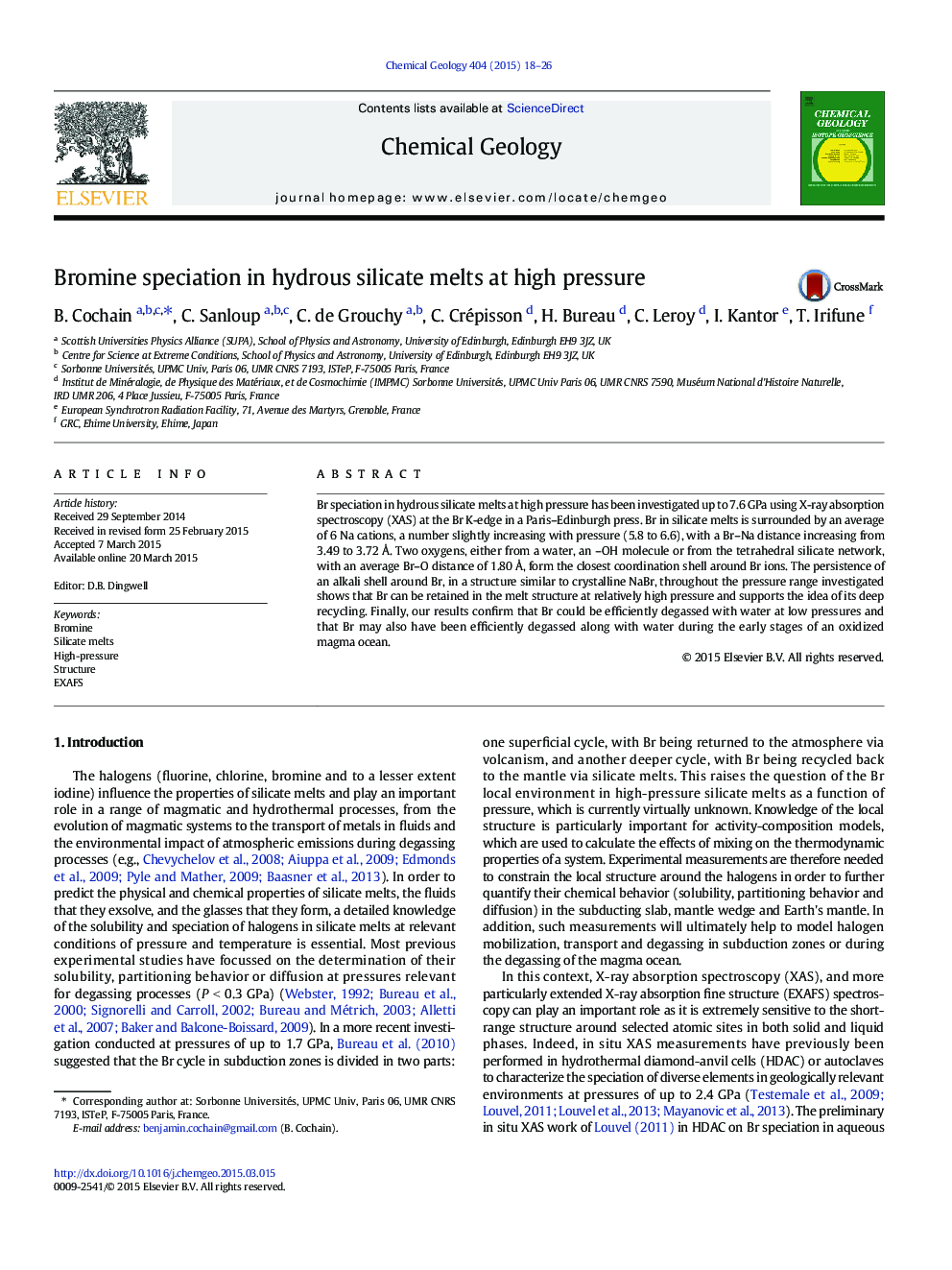| Article ID | Journal | Published Year | Pages | File Type |
|---|---|---|---|---|
| 4698504 | Chemical Geology | 2015 | 9 Pages |
•Br speciation has been investigated in hydrous silicate melts up to 7.6 GPa by EXAFS spectroscopy.•Br is surrounded by increasing number of Na cations (5.8 to 6.6), with an increasing Br–Na distance (3.49 to 3.72 Å).•Two oxygens form the closest coordination shell around Br ions.•Br can be retained in the melt structure at relatively high pressure which supports the idea of its deep recycling.•Br could also be efficiently degassed with water at low pressures.
Br speciation in hydrous silicate melts at high pressure has been investigated up to 7.6 GPa using X-ray absorption spectroscopy (XAS) at the Br K-edge in a Paris–Edinburgh press. Br in silicate melts is surrounded by an average of 6 Na cations, a number slightly increasing with pressure (5.8 to 6.6), with a Br–Na distance increasing from 3.49 to 3.72 Å. Two oxygens, either from a water, an –OH molecule or from the tetrahedral silicate network, with an average Br–O distance of 1.80 Å, form the closest coordination shell around Br ions. The persistence of an alkali shell around Br, in a structure similar to crystalline NaBr, throughout the pressure range investigated shows that Br can be retained in the melt structure at relatively high pressure and supports the idea of its deep recycling. Finally, our results confirm that Br could be efficiently degassed with water at low pressures and that Br may also have been efficiently degassed along with water during the early stages of an oxidized magma ocean.
